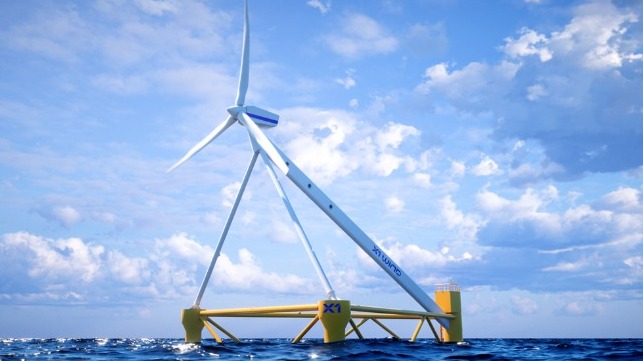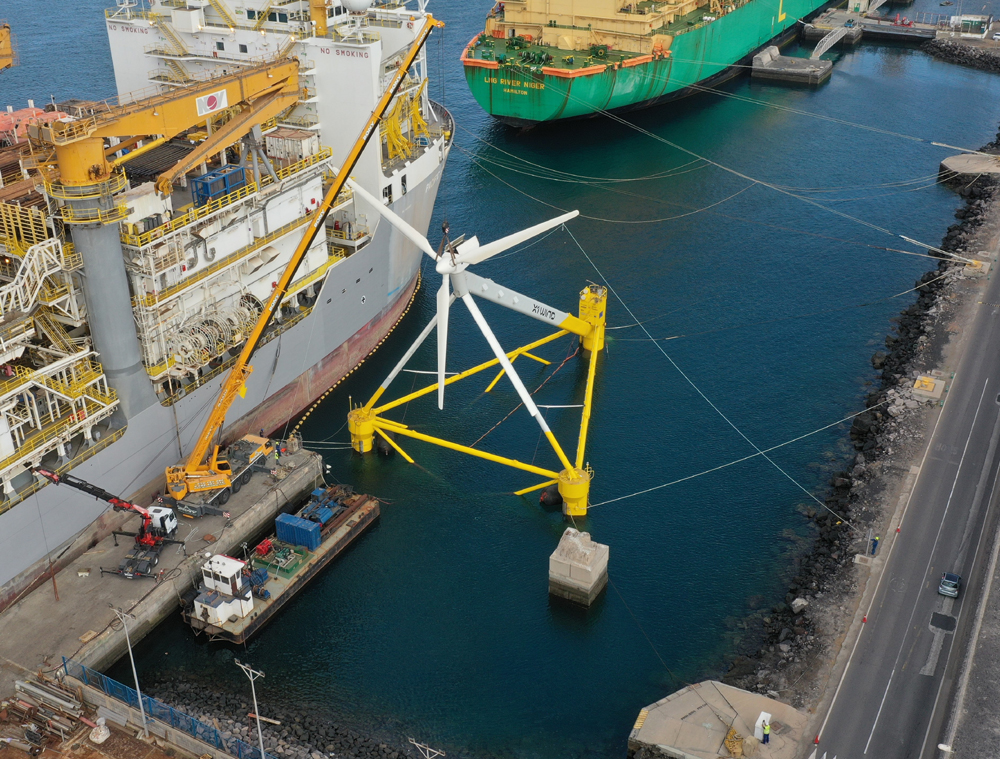Downwind Floating Offshore Wind Prototype Ready for Commissioning

Rotor assembly has been completed on a novel demonstration project for floating wind that seeks to reposition the turbine into a downwind position. According to the Spanish floating wind technology company X1 Wind, the new concepts will increase the efficiency of wind turbines and permit the technology to continue to increase in size.
The firm’s X30 prototype is fitted with a specially adapted V29 Vestas turbine. The unique downwind system is designed to be able to ‘weathervane’ and orientate passively with the wind to maximize energy yields. In addition, it is deployed on a novel tripod-like platform that the company says features greater structural efficiency, with a lighter and more scalable design, while minimizing the environmental impact on the ocean.
“From the outset, X1 Wind has been committed to finding a more efficient structural approach for floating wind compared to more traditional systems,” says Alex Raventos, CEO of X1 Wind. “We believe we have now developed the technology to take full advantage of the marine environment while respecting the future sustainability of the ocean. Our system will drive greater structural efficiency, reducing loads, especially the bending moments at the base of the tower, allowing for a lighter design.”

X1 Wind recently completed rotor assembly preparing for deployment in the Canary Islands (X1 Wind)
Co-founder of the company Carlos Casanovas said the industry-wide approach for land-based turbines has traditionally focused on upwind rotors to avoid the so-called ‘tower shadow’ effect. However, upwind configurations require specific measures to prevent tower strikes, with the challenge increasing as turbine blades get longer.
With 100 meter plus blades becoming more prevalent in offshore environments, significant measures are needed to avoid tower strikes says Casanovas. This typically involves increasing the distance between the blades and tower applying a tilt and cone angle, and designing more costly pre-bent and stiffer blades, which also makes them heavier. However, these measures come with increased manufacturing complexity, cost, and potential loss of power generation.
"Using a downwind configuration reduces the risk of tower strikes, opening up the possibility of using lighter, more flexible, and therefore cheaper large-scale wind turbine designs," says Casanovas. “These are key characteristics which will enable the development of future ‘extreme-scale’ downwind structures with research already being conducted on 200 meter blades and 50MW power ratings.”
X1 Wind’s platform utilizes the best features of a semi-submersible – with a low draft – and the ability to reach deeper waters by a Tension Leg Platform (TLP) mooring system – with a small seabed footprint.
Assembly of the X30 prototype was recently completed in Las Palmas, Gran Canaria, and it is ready for installation. Strong summer trade winds in Gran Canaria brought minor delays after the initial load-out, but in the coming weeks, X1 will engage in cable and anchor installations before the platform is stationed at a water depth of approximately 165 feet for final commissioning.
